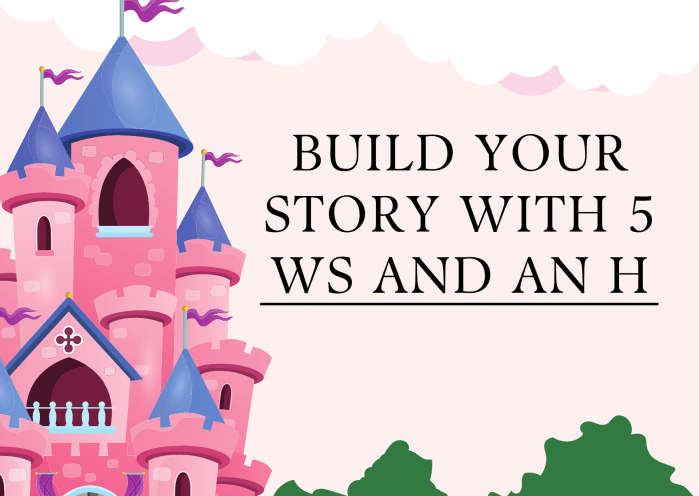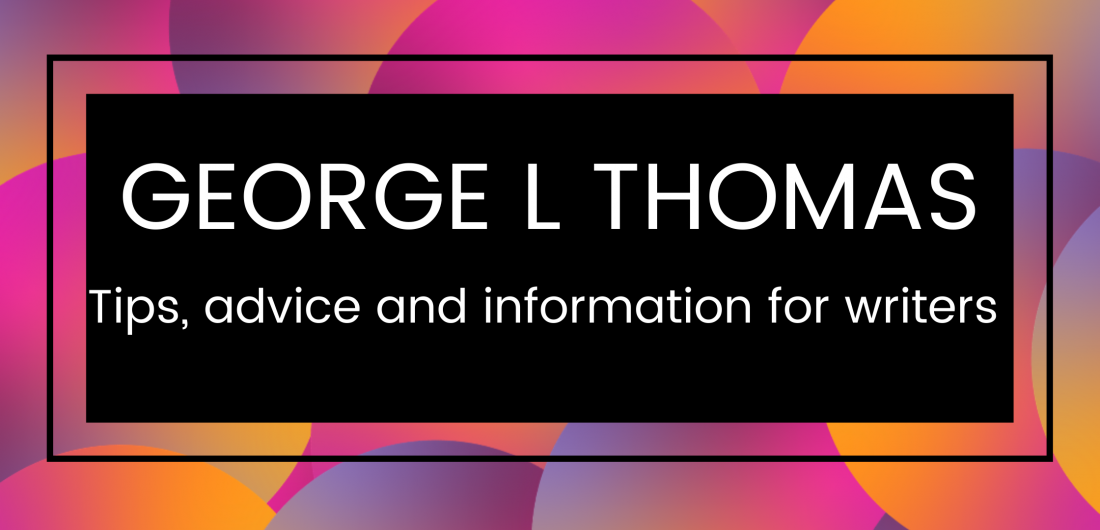
Hi everyone, I hope you’re all well! Today, I’m going to share another handy way to flesh out a story idea.
Build Your Story With 5 Ws and an H
Ideas need to be grown, nurtured, and fed. Eventually, a spark needs to become a fully-fledged bonfire of creativity and the only way to get to that point is to take some time to play with that initial flash of inspiration and feed it some fuel in the form of imagination. One way of doing that is by asking questions.
There are six simple questions you should ask yourself when you want to build upon or expand an idea for a story and they are: Who? What? Where? When? Why? and How?
Who?
The ‘who’ of the story are the characters. These are the people who will populate your story world. Make a list of characters that you think you might need to include in your story. Jot down any ideas for any supporting characters to help round out your cast. Make note of any personality traits you think might apply to them and any physical descriptions, too.
What?
The ‘what’ of the story is the character’s goal. It is the main point of the story. The character or characters set out to find or achieve this goal and their attempt to succeed is the plot. Make a note of any ideas about what your main character might want or need and also think about what will happen if they don’t get it. Why is it important that they succeed?
Where?
The ‘where’ is the primary setting of the story. Where does the action occur? In space? On a ranch? On a ranch in space? (an interesting notion). Stories can take place anywhere. They can be on another planet, in a different realm, or in a single room. Again, note any impressions of your story’s setting. Every idea that pops into your head could be useful later on.
When?
The ‘when’ of your story is the time at which your story takes place. Is your story set in the past? The present? The future? Does it span all three time periods? Jot down anything that occurs to you. You can go through all of your ideas later and pick out the ones you think are good enough and form your story from them.
Why?
The ‘why’ of the story is the reason you are telling it. Is there a point you wish to convey? A theme you’d like to explore? A subject you think should be more talked about, such as climate change, war or prejudice? Knowing why you are writing a particular story can help you focus the narrative and help to narrow down any research you might need to do. For example, if you want your story to highlight the long-term effects of climate change, then you will need to know what the long-term effects of climate change are. Or, if you want to convey a particular theme, such as love, or friendship, then deciding in advance can help you thread the theme throughout the story from the off.
How?
The ‘how’ of the story is all about the way in which your character will go about achieving their goal. What will they need? Who will they meet? What obstacles will get in their way and how will your story end? You might also consider the practical ‘hows’ of storytelling, such as how will you tell the story? i.e. will you focus more on the plot, or rely more heavily on character development? Will you tell it in the first person? Third? Or be a little more ‘outside of the box’ and use the second person? What tense will you tell the story in? Past tense (he saw, he did, he moved)? or present tense (he sees, he does, he moves)?
Answering these questions will help you build up your story while helping your subconscious to work and churn out new ideas as you go.
As always, thanks for spending some of your time with me today! I hope you learned something new.
Until next time,
George
© 2022 GLT
Categories: Generating Ideas, Outlines

Leave a comment